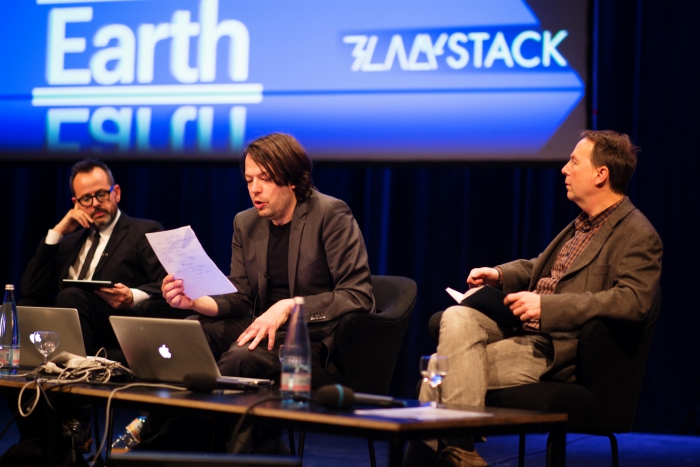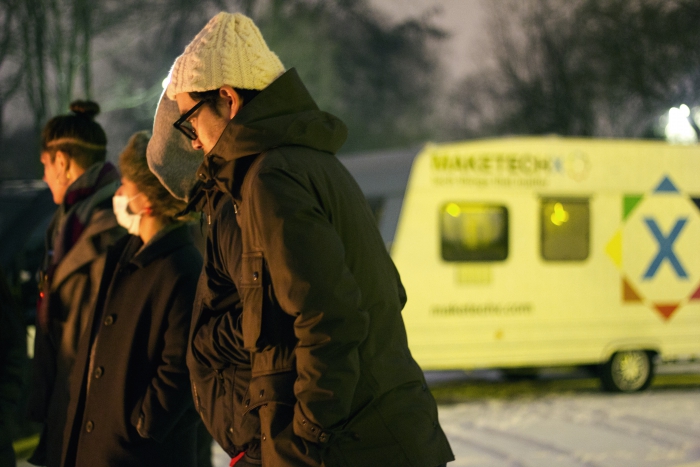transmediale 2014
transmediale 2014 afterglow
Between shiny high-tech, e-waste dumps, big data businesses and mass surveillance schemes: Under the title afterglow, the 27th edition of transmediale explored our present post-digital moment as one in which former treasures of our mediatised life are turning into trash. International researchers, artists and activists focused on the ambivalent condition of current digital culture, looking towards a future in which media technologies have become part of daily life, turning into physical and immaterial waste.
transmediale 2014 adopted the afterglow of the digital revolution as a starting point to deal with some of the burning issues of today and to invent new speculative practices.
Festival Theme
Explore the ...
Conference program
Film & Video program
Art Hack Day
Participants
Check out the ...
Festival Team

Festival Design 2014
The festival design for transmediale 2014 afterglow dealt with the afterglow phenomena on various layers, mostly by playing with dichotomies of our daily lives in post-digital conditions. The visual world opened up a more heterogeneous discourse than former festival editions. This diversity also became apparent in the new corporate identity of transmediale, which strongly supports the transversal thinking.
The most significant aspect of the visual world is the composition of the imagery: The fields of association deal with media excess, information access, material e-waste environments states and conventional stress compensation methods like yoga or spa treatments. By combining these elements, the design products generate a feeling of being "in between" technological and more or less anthropological dogmas, which are nowadays imposed by different forces – they actually start to intermingle. By these means the pointer of "what role we have to play or believe in the state of the afterglow" is set to zero (0): A new, problematic and stressful living condition for human beings, which has to be discussed at the festival. Moreover, there are many other references which can be explored. The afterglow logo typeface relates back to the font Roboto used in the Google Glasses campaign and tops the design approach with a very contemporary techno-commercial look. The festival website and its gimmicks enhance this feeling as well. Slickness plays an important role in this case – an "uneasy" feeling appears just at a second glance! Concepts like techno-fetishism and yoga get turned inside out. The critical perspective becomes evident only slowly and progressively.
The festival issue of the transmediale/magazine extends the referential world by appropriating the visual language of a global and hyper-commerical magazine culture (with the "flight magazine" as a vanguard), and putting it into this years’ concept of post-digital conditions. It generates differences by the heterogeneity of
Festival design 2014 by The Laboratory of Manuel Bürger.

Festival Architecture 2014
Superstructure
Festival architecture by raumlaborberlin: Andrea Hoffmann, Markus Bader with Claire Mothais, Winnie Westerlund







